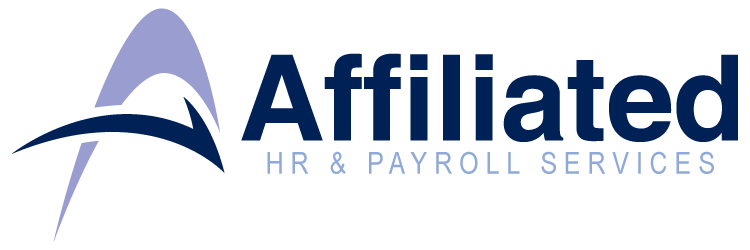
by Afilliated HR & Payroll | Jan 26, 2024 | Alert, Regulatory Compliance
As of February 6, 2024, Texas will prohibit employers of all sizes from adopting or enforcing a policy that requires applicants or employees to receive a COVID-19 vaccination.
Additionally, employers can’t take any adverse action against an employee or applicant for their refusal to be vaccinated against COVID-19. However, a healthcare facility, healthcare provider, or physician can have a reasonable policy that includes requiring unvaccinated employees to use protective medical equipment if they pose a risk to patients based on their routine, direct exposure to them.
Action Item
Eliminate any policy or practice of requiring COVID-19 vaccination for applicants or employees. Pay special attention to job ads, job descriptions, or other documentation that may not get frequent review.

by Afilliated HR & Payroll | Jan 3, 2024 | Alert, Benefits & Compensation, Regulatory Compliance
Below are federal payroll tax rates and benefits contribution limits for 2024.
Social Security tax
In 2024, the Social Security tax rate is 6.2% for employers and employees, unchanged from 2023. The Social Security wage base is $168,600 for employers and employees, increasing from $160,200 in 2023. Self-employed people must pay 12.4% on the first $168,600.
Medicare tax
In 2024, the Medicare tax rate for employers and employees is 1.45% of all wages, unchanged from 2023. Self-employed people must pay 2.9% on all net earnings.
Additional Medicare tax
In 2024, the additional Medicare tax remains unchanged at 0.9%. This tax applies to wages and self-employment income over certain thresholds ($200,000 for single filers and $250,000 for joint filers).
401(k) limits
In 2024, the maximum contributions to traditional and safe harbor plans are as follows:
- Employee (age 49 or younger): $23,000, up from $22,500 in 2023.
- Employee catch-up (age 50 or older): $7,500, unchanged from 2023.
- Employee and employer (age 49 or younger): $69,000, up from $66,000 in 2023.
- Employee and employer (age 50 or older): $76,500, up from $73,500 in 2023.
Employees can contribute up to $16,000 to a SIMPLE 401(k) plan, up from $15,500 in 2023.
Health savings account and high-deductible health plan limits
In 2024, the maximum contributions to an HSA are as follows:
- Employer and employee: $4,150 (self only) and $8,300 (family).
- Catch-up amount (age 55 or older): $1,000.
In 2024, the limits for an HDHP are as follows:
- Minimum deductibles: $1,600 (self only) and $3,200 (family).
- Maximum out-of-pocket amounts: $8,050 (self only) and $16,100 (family).
Flexible spending account limits
In 2024, employees can contribute:
- Up to $3,200 to a health care FSA, increasing from $3,050 in 2023.
- Up to $5,000 to a dependent care FSA if filing single or jointly and up to $2,500 if married but filing separately.
Qualified Small Employer Health Reimbursement Arrangement limits
In 2024, employers with a QSEHRA can reimburse employees for health care expenses as follows:
- $6,150 (self only), up from $5,850 in 2023.
- $12,450 (family), up from $11,800 in 2023.
Commuter benefits limit
In 2024, employees can contribute up to $315 per month for qualified commuter benefits (e.g., mass transit and parking), up from $300 per month in 2023. This limit includes any employer contributions.
Adoption assistance exclusion limit
In 2024, up to $16,810 in employer-sponsored adoption assistance may be excluded from an employee’s gross wages, increasing from $15,950 in 2023.
Remember, these are all federal rates and limits. Be sure to check with the necessary agencies for state and local rates.
Note that this is a summary of some very complex provisions. Don’t make any assumptions about your situation until you’ve spoken with a qualified tax professional.

by Afilliated HR & Payroll | Oct 18, 2023 | Alert
The Equal Employment Opportunity Commission (EEOC) has announced that 2022 EEO-1 Component 1 data collection opens on October 31, 2023. The EEO-1 Component 1 report is a mandatory filing required of all private sector employers with 100 or more employees, and federal contractors and subcontractors with 50 or more employees meeting certain criteria.
The deadline to file EEO-1 reports is December 5, 2023. Employers should visit the EEO-1 Component 1 website for the latest filing updates and to find additional information including the Instruction Booklet. There will also be a Filer Support Message Center available when reporting opens.
Changes for Multi-Establishment Employers
The biggest change for 2022 EEO-1 data collection is that multi-establishment employers (those with more than one location) will no longer be required to file separate “types” of reports (e.g., “Type 4” or “Type 8”) based on the size of each of their non-headquarters locations. Instead, they’ll use the new “Establishment-Level Report” to report data for each of their non-headquarters locations, regardless of headcount.
Additionally, the Consolidated Report will now auto-generate and be auto-populated with data from the Headquarters Report and each Establishment-Level report. However, employers are still responsible for ensuring that the data in that report, including the total employee count, is accurate.
We’ve created a handy guide to answer many of the most common questions about the EEO-1 report. You can find it on the platform by searching for “EEO-1 Mini-Guide.”

by Afilliated HR & Payroll | Sep 27, 2023 | Alert
As the Wall Street Journal pithily summarizes it, “Higher earners age 50 and up will get two more years to use pretax dollars for all of their retirement savings in 401(k)s and similar plans, after the Internal Revenue Service delayed a new requirement.”
The IRS has announced an administrative transition period that extends until 2026 the new requirement that any catch-up contributions made by higher‑income participants in 401(k) and similar retirement plans must be designated as after-tax Roth contributions.
The IRS has also clarified that plan participants who are age 50 and over can continue to make catch‑up contributions after 2023, regardless of income.
According to the guidance, starting in 2024, the new Roth catch-up contribution rule applies to an employee who participates in a 401(k), 403(b) or governmental 457(b) plan and whose prior-year Social Security wages exceeded $145,000.
The administrative transition period will help taxpayers transition smoothly to the new Roth catch-up requirement and is designed to facilitate an orderly transition for compliance with that requirement, according to the IRS. The notice also clarifies that the SECURE 2.0 Act does not prohibit plans from permitting catch-up contributions, so plan participants who are age 50 and over can still make catch-up contributions after 2023.
The Treasury Department and the IRS say they will be issuing future guidance to help taxpayers, and the notice describes several positions that are expected to be included. As with most IRS announcements, the rules can be complex. Be sure to get competent advice to make sure you understand how this change may affect you.

by Afilliated HR & Payroll | Sep 5, 2023 | Alert
The federal Department of Labor (DOL) has finally announced the release of its proposed rule to increase the minimum salary required for certain employees to be classified as exempt from minimum wage and overtime. While we don’t usually report on proposed rules because they have a tendency to change—and often the effective date is distant and unknown—we wanted to provide some information given the potential significance of this rule.
Currently, executive, administrative, and professional employees must be paid at least $684 per week ($35,568 per year) to be properly classified as exempt. This grouping of exemptions is often referred to collectively as “EAP.” The proposed rule, if adopted as-is, would increase the salary threshold to require that EAP employees be paid at least $1,059 per week ($55,068 per year) to be classified as exempt.
Currently, employees who are exempt under the highly compensated employee (HCE) exemption, which has its own specific criteria, must be paid at least $107,432 per year. The proposed rule, if adopted as-is, would increase this amount to require that HCE employees be paid at least $143,988 per year to be classified as exempt.
Finally, the proposed rule, if adopted in its current form, would implement automatic updates to the EAP salary level and HCE total annual compensation requirement every three years.
To learn more about the rules for these exemptions, including what duties employees must perform to qualify, see the Federal FLSA White Collar Exemption Guide on the platform.
Timing
The proposed rule will likely be published soon and then there will be a 60-day comment period. During that time, the DOL will accept comments (read: suggestions, complaints, arguments) from anyone who would like to submit them.
Once the comment period is closed, the DOL will review the feedback and potentially make changes before publishing the final rule. We don’t know how long that review and revision process will take, though it will likely be at least a few months. The DOL has suggested that these changes could take effect as soon as 60 days after the publication of the final rule.
It’s worth noting that last time the DOL attempted a drastic change to the salary minimums, the rule was thrown out in litigation just weeks before taking effect. We have no way of predicting if that will happen again, but it is likely that the rule change will be litigated.
Impacts
While it may be a bit early to start thinking about the impacts of this rule change, employers that want to maximize planning time should consider the following:
- You may need to reclassify many employees as nonexempt—this will bring the expected administrative hassle.
- If you have exempt employees who make well below the proposed minimum salary (and therefore won’t be getting a raise to bring them up to the new threshold), and they’re regularly working more than 40 hours per week, you’ll need to budget for their overtime pay.
- If you can’t afford to pay overtime, you’ll need to redistribute work, find other efficiencies, or potentially alter aspects of your business.
- Employees who go from exempt to nonexempt will need to be trained in the ways of nonexempt employees (e.g., they’ll need to log their time, take lunches and breaks, and observe your overtime policies).
As usual, if a state law requires higher minimum salaries than what is or will be required by the federal rule, the state minimums must be followed.
We’ll provide additional information when the final rule is published and will create a number of resources to help employers make the necessary changes as smoothly as possible. If you’d like to review the proposed rule, you can find it here.

by Afilliated HR & Payroll | Aug 31, 2023 | Alert
On August 23, 2023, the IRS announced that the Affordable Care Act (ACA) affordability threshold will be 8.39%, reduced from 9.12% in 2023, for plan years beginning in calendar year 2024 (after December 31, 2023). Under the ACA’s Employer Shared Responsibility provision (play or pay), large employers (those with an average of 50 full-time employees—including full-time equivalent employees—during the prior year) must either:
- Offer most full-time employees and their children minimum essential, minimum value coverage that is affordable at the employee-only level of coverage; or
- Make an employer shared responsibility payment to the IRS if at least one of their full-time employees purchases coverage on a Health Insurance Marketplace and receives a premium tax credit because their employer did not offer qualifying coverage.
Under the new threshold, to be affordable for the 2024 plan year, the employee’s required contribution to the plan cannot be more than 8.39% of their income.
Read more about affordability and minimum value on the IRS’s Questions and Answers on Employer Shared Responsibility Provisions Under the Affordable Care Act page.
IRS Revenue Procedure 2023-29 will be published in Internal Revenue Bulletin 2023-37 on September 11, 2023.






